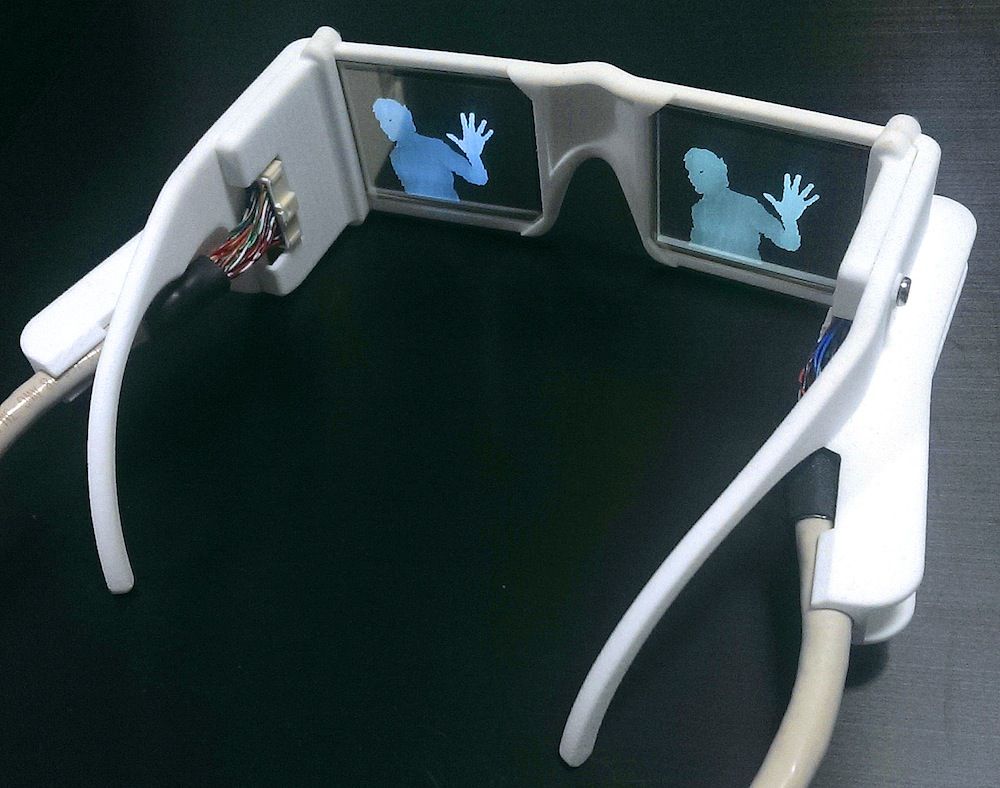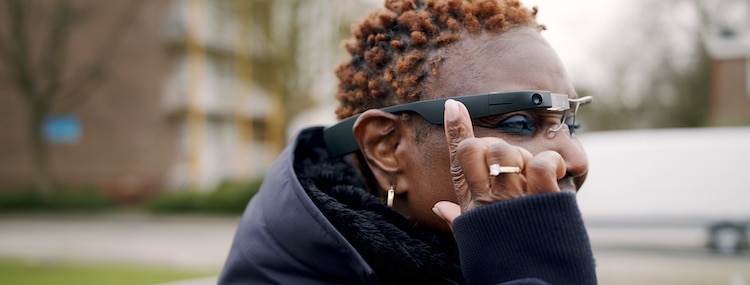Wearable Technology for Low Vision: Transforming How We Navigate the World
Empowering Independence With Assistive Technology for the Blind
The assimilation of assistive technology for individuals who are aesthetically damaged or blind represents a substantial advancement in cultivating freedom and improving lifestyle. With a variety of tools-- from display readers to innovative tactile devices-- these modern technologies not just promote navigating and communication however also promote social inclusion and engagement in numerous facets of life. As we discover the varied kinds of assistive tools and their real-world applications, it becomes clear that the effect is extensive. Yet, the evolution of this innovation elevates essential concerns concerning availability and future growths that warrant additional examination. Assistive technology for the blind.
Recognizing Assistive Technology
Although assistive modern technology has developed considerably for many years, its fundamental function stays the very same: to enhance the lifestyle for people with disabilities, especially those that are blind or aesthetically impaired. This modern technology encompasses a broad series of devices and gadgets that promote independence and performance in daily activities.
Assistive modern technology can be categorized right into high-tech and low-tech remedies, each developed to meet certain demands. Sophisticated tools typically consist of software program applications, specialized equipment, and flexible tools that utilize advanced technology to provide support in various contexts. Conversely, low-tech services may include day-to-day things that are customized to boost ease of access, such as magnifiers or responsive markers.
The combination of assistive innovation into the lives of individuals that are blind or aesthetically hindered not only promotes freedom yet likewise promotes social addition and involvement in instructional and professional environments. By leveraging these innovations, individuals can browse their surroundings, gain access to info, and communicate efficiently, thereby enhancing their overall lifestyle. Understanding assistive modern technology is critical for advocates, specialists, and caretakers who aim to sustain people in maximizing their potential and attaining better freedom.
Kinds Of Assistive Gadgets
Assistive devices for the blind and visually damaged are essential devices that boost daily living by dealing with details challenges experienced by individuals. These tools can be broadly classified right into three primary kinds: optical devices, digital tools, and sensory devices.

Sensory devices, such as Braille display screens and tactile maps, offer different methods to receive details. Braille shows transform electronic text right into Braille, making it possible for individuals to check out touch. Responsive maps provide spatial understanding via raised textures and lines, permitting better ecological awareness.
With each other, these assistive devices empower people with aesthetic disabilities to involve more completely with their environments, advertising greater freedom and self-confidence in day-to-day activities.

Effect on Daily Life
The combination of assistive modern technology into the lives of individuals that are aesthetically impaired or blind dramatically boosts their ability to browse and communicate with the world around them. Devices such as screen visitors, Braille shows, and mobile applications help with access to info, enabling individuals to involve with electronic web content, connect efficiently, and handle everyday jobs individually.
In addition, technologies like smart glasses and navigation apps offer real-time help in unknown atmospheres, enhancing mobility and confidence. These devices make it possible for users to recognize barriers, checked out indicators, and even identify faces, hence fostering a sense of autonomy in public areas. Furthermore, home automation systems, which can be regulated through voice commands, enable people to manage their living environments more efficiently, boosting convenience and security.
The effect of assistive innovation extends past functional tasks; it advertises social incorporation and emotional well-being. By linking the void between individuals and their surroundings, these technologies encourage customers to get involved totally in area activities, seek educational opportunities, and take part in significant relationships. Inevitably, the development of assistive technology contributes in redefining the possibilities for people who are aesthetically damaged or blind, resulting in a more obtainable and inclusive culture.
Success Stories and Reviews

Another effective testimonial comes from Mark, a current college grad who used screen reading software throughout his scholastic journey. This modern technology allowed him to access training course products and take part in discussions, inevitably resulting in his successful change right into the labor force. Mark credits assistive modern technology for empowering him to attain his career goals, emphasizing its function in leveling the playing field for individuals with visual impairments.
Furthermore, area facilities have actually reported raised engagement in their programs thanks to the introduction of obtainable electronic systems. These systems have made it less complicated for people to link, share sources, and assistance each other. These look at here now success tales collectively highlight the profound result of assistive technology in fostering self-reliance, boosting quality of life, and breaking down barriers for the blind and aesthetically impaired area.
Future Patterns in Assistive Technology
Arising technologies are poised to transform the landscape of assistive tech for individuals that are aesthetically damaged or blind. Technologies in expert system (AI) and maker discovering are improving the abilities of gadgets, enabling more instinctive customer experiences. AI-driven applications are significantly able to recognize objects and read message aloud in real-time, giving individuals with valuable details regarding their surroundings.
Furthermore, advancements in wearable i need an eye exam innovation are developing new opportunities for self-reliance. Smart glasses outfitted with augmented fact features can overlay essential information onto the individual's visual field, helping with navigating and communication with the environment. The integration of Web of Things (IoT) gadgets is streamlining availability in clever homes, permitting users to control appliances and receive notices via voice commands or tactile interfaces.
The advancement of braille display screens and responsive responses systems is also rising, advertising accessibility to electronic material and improving communication. As these innovations remain to progress, they guarantee to enhance daily living, educational chances, and work potential customers for individuals with visual disabilities. Continuous cooperation in between technologists, customers, and campaigning for groups will certainly be important in ensuring these innovations fulfill the requirements of the community effectively.
Verdict
Finally, assistive innovation plays a pivotal duty in improving the independence of individuals that are blind or aesthetically impaired. By supplying crucial devices and resources, these technologies help with improved communication, navigation, and access to information, consequently fostering freedom and self-confidence. The transformative influence of assistive devices not only advertises reliable interaction with the atmosphere but likewise motivates social inclusion and involvement in numerous elements of life, inevitably equipping users to grow within their neighborhoods.
The assimilation of assistive innovation for individuals that are blind or visually damaged stands for a substantial advancement in fostering independence and enhancing quality of life.The combination of assistive innovation right into the lives of people who are blind or aesthetically harmed not just promotes autonomy but also promotes social addition and involvement in instructional and specialist atmospheres. Inevitably, the development of assistive innovation is instrumental in redefining top article the possibilities for people who are blind or aesthetically damaged, leading to an extra comprehensive and available culture.
Numerous individuals who are blind or visually impaired have actually shared motivating success tales that highlight the transformative influence of assistive technology on their lives.In final thought, assistive innovation plays an essential function in improving the freedom of people who are aesthetically impaired or blind.